Papers by Hermínio Araújo-Júnior
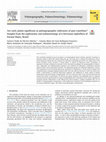
The continental colonization process by plants is an underexplored theme in Brazil, especially co... more The continental colonization process by plants is an underexplored theme in Brazil, especially concerning ta-phonomic studies of plants that existed during this age. This study aims to interpret the taphonomic and pa-leoenvironmental settings that best represent the fossil plant assemblages preserved in the upper strata of the Furnas Formation (Lower Devonian of Paraná Basin), at Jackson de Figueiredo county, municipality of Jaguariaíva (Paraná), clarifying the potential of these fossil plant assemblages for paleogeographic reconstructions. Taphonomic and sedimentological signatures were analyzed and submitted to multivariate statistical analyses (cluster and correspondence analyses). Two taphonomic groups were identified (Taphofacies A and B). The interpretation of the two groups allowed the visualization of: Taphofacies A, which consists of samples with a dispersed degree of packing, fragmented plant fossils, 40% mica with sizes between 0.5 and 1 mm and no trace fossils, is representative of relatively high-energy conditions; and Taphofacies B, which consists of densely packed plants with partial degree of fragmentation, 10% mica with sizes under 0.5 mm and both horizontal and vertical trace fossils, is representative of relatively low-energy conditions. Our taphonomic data are consistent with previous facies interpretations of a lagoon/interdistributary bay environment. In this context, taphofacies A represents episodic sedimentation events influenced by fluvial dynamics, yielding assemblages that are not suitable for paleogeographic interpretations, while Taphofacies B represents fossil assemblages originated in a low-energy sedimentary regime, with utility for paleogeographic reconstructions.
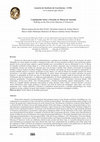
Observation itineraries of paleontological and geological aspects in the façades and floors of bu... more Observation itineraries of paleontological and geological aspects in the façades and floors of buildings are very widespread in several places of the world and are currently present in Brazil. This urban geotourism allows people to get to know the geodiversity without having to be in the outcrop in situ. The Museum of Tomorrow, located in Praça Mauá, nº 1, downtown Rio de Janeiro, has an inner lining and part of the outer lining, a coloring lime varying from beige to ivory. This limestone, originating from the Jandaíra Formation, Upper Cretaceous of the Potiguar Basin, Northeast of Brazil, is full of fossils of gastropod molluscs. The present work describes the fossils found on the floor in and around the Museum of Tomorrow and proposes a geotouristic script and an explanatory folder. For the elaboration of the script, eight points were selected based on four aspects: a) quantity of fossils per slab, b) taxonomic diversity, c) better state of preservation of fossils, d) different type of fossilization, and e) paleoenvironmental differences. The fossils identified in the course are the following gastropod molluscs: Plesioptygmatis Böse, 1906 and Nerinea Deshayes, 1827 (Nerineidae), Tylostoma Sharpe, 1849 (Naticidae), Trochactaeon Meek, 1863 (Trochacteonidae) and Family Fasciolariidae (indeterminate genus). As the Museum of Tomorrow works on exhibitions related to past, present and future time, it is possible during the course to enter information on geological time and to discuss this topic more comprehensively. In addition, this script, along with the explanatory folder, will allow the mediators to develop the paleontological content in the guided tours of schools and the public in general, taking advantage of the space to diversify the scientific dissemination.
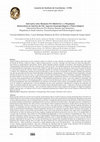
Human groups spread out over the Asia toward the eastern Siberia until to reach the Americas cros... more Human groups spread out over the Asia toward the eastern Siberia until to reach the Americas crossing the Bering Strait. From then on, humans began to coexist with the American Quaternary Megafauna. All researches performed involving human-megafauna interactions so far are parochial and have only revealed punctual occurrences. Compilations and discussions of the incidence of interactions between prehistoric humans and Quaternary megamammals have not been conducted for South America. This paper presents a compilation of paleontological-archeological sites with evidence of prehistoric human-megafauna interaction in South America and discusses their general characteristics in order to generate an overview of these cases and develop a mapping of already acquired information. In addition, we standardize the types of marks found in the previously studied materials, but which did not present a formal description using zooarchaeological terminologies. Human-megafauna interactions are reported in Argentina, Brazil, Venezuela and Uruguay. In South America, species of giant sloths and mastodons seem to have been preferred by humans. Four major types of anthropogenic modifications are observed (sawing and slicing, scraping, chopping and dynamic percussion), however, there is no predominance of a specific type of alteration. These marks are well distributed geographically, as well as in relation to mammalian taxa. Thus, it is not possible to determine a pattern between the types of anthropogenic modifications, geographic location, and taxa. This may indicate that the type of butchering and the damages are independent attributes, and it is likely that different motions would be used for different purposes, depending on the species. The scarcity of butchering cases suggests that megafauna hunting was an opportunistic event, a hypothesis that contrasts with the idea of overkill. The dates obtained are not consistent with the classical model of human arrival in South America – which would have occurred by a single migratory pulse across the Bering Strait –, but corroborate the hypothesis of more complex migration pathways. They also corroborate the hypothesis that the human being cohabited with the Quaternary megafauna for millennia prior to the Late Pleistocene-early Holocene megafaunal extinction.
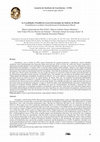
Atualmente, com o auxílio de GPS, outras ferramentas de geoprocessamento e aplicativos, muitos tr... more Atualmente, com o auxílio de GPS, outras ferramentas de geoprocessamento e aplicativos, muitos trabalhos científicos sobre paleontologia têm fornecido dados mais precisos sobre os locais de coleta dos fósseis, permitindo a elaboração de mapas digitais. Essas informações são de grande importância, visto que, com a crescente urbanização, muitos afloramentos são destruídos e os dados sobre o local de coleta acabam sendo perdidos. Todavia, esses mapas abrangem apenas uma determinada bacia sedimentar, ou uma unidade litoestratigráfica, ou um determinado sítio fossilífero ou mesmo um pequeno local onde um determinado fóssil foi encontrado. Uma visão da localização exata, ou até mesmo aproximada, de onde esses fósseis foram encontrados em uma região do Brasil só é possível a partir de dados georreferenciados ou de informações geográficas muito precisas. Em função disso, este trabalho, que faz parte de um projeto maior chamado "Mapa digital das principais localidades fossilíferas do Brasil", teve como objetivo a elaboração de um mapa digital dos principais locais de coleta de fósseis da região Sudeste do Brasil. Para isso, foi realizado levantamento bibliográfico dos principais trabalhos científicos e coleções institucionais e criado um banco de dados em forma de planilha, com as ocorrências dos fósseis para serem exibidas em um mapa digital. Esse trabalho permitirá um conhecimento mais preciso dos locais onde são encontrados os fósseis e o mapa e o banco de dados serão disponibilizados tanto para o Departamento Nacional de Produção Mineral (DNPM), auxiliando nas ações de monitoramento, fiscalização e proteção dos sítios fossilíferos, quanto para a comunidade científica e a população como um todo. Além disso, uma visão mais ampla sobre a diversidade paleontológica do Brasil permitirá ações mais específicas de conscientização da população, através de ações educativas nos municípios onde são encontrados os fósseis, no intuito de valorar e preservar os sítios paleontológicos em nível local e regional. (Abstract: Nowadays, with the help of GPS, other geoprocessing tools and applications, many scientific papers on paleontology have provided more accurate data on fossil sites, allowing the development of digital maps. This information is of great importance, since with increasing urbanization many outcrops are destroyed and data on the collection site are lost. However, these maps cover only a particular sedimentary basin, or a lithostratigraphic unit, or a particular fossiliferous site or even a small site where a particular fossil was found. An accurate or even approximate view of where these fossils were found in a region of Brazil is only possible from georeferenced data or from very precise geographical information. As a result, this work, which is part of a larger project called " Digital map of the main fossiliferous localities of Brazil " , aimed at the elaboration of a digital map of the main sites of fossil collection in the Southeastern region of Brazil. For this, a bibliographical survey of the main scientific papers and institutional collections was carried out and a database was created in the form of a spreadsheet, with the fossil occurrences displayed on a digital map. This work will allow a more precise knowledge of the sites where the fossils are found and the map and the database will be made available to the National Department of Mineral Production (DNPM), assisting in the monitoring, surveillance and protection actions of fossiliferous sites, and for the scientific community and the population as a whole. In addition, a broader view on the paleontological diversity of Brazil will allow more specific actions to raise awareness of the population, through educational actions in the municipalities where fossils are found, in order to assess and preserve paleontological sites at local and regional level).
We performed a macroscopic study on six species of Pleistocene sloths from the Brazilian Intertro... more We performed a macroscopic study on six species of Pleistocene sloths from the Brazilian Intertropical Region (BIR) including Valgipes bucklandi, Catonyx cuvieri, Mylodonopsis ibseni, Glossotherium sp., Ocnotherium giganteum and Eremotherium laurillardi and compared the results with a previous investigation of Nothrotherium maquinense and Ahytherium aureum. Differential diagnostic analysis revealed six varieties of musculoskeletal diseases: Calcium Pyrosphosphate Deposition Disease (CPPD), Spondyloarthropathy (SpA), Osteoarthritis (OA), Osteochondritis Dessicans (OD), Schmorl’s Node (SN) and Spondylosis Deformans (SD). We also carried out multivariate statistical analyses on all Pleistocene sloths to verify the similarity between taxa based on diagnosed diseases.
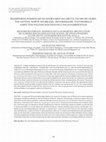
FOSSIL MAMMALS FROM THE QUATERNARY OF TACHO DE OURO CAVE, STATE OF TOCANTINS, NORTHERN BRAZIL: DI... more FOSSIL MAMMALS FROM THE QUATERNARY OF TACHO DE OURO CAVE, STATE OF TOCANTINS, NORTHERN BRAZIL: DIVERSITY, TAPHONOMY AND PALEOICHNOLOGICAL AND PALEOENVIRONMENTAL ASPECTS
Caves of the Bambuí Speleological Province, in Aurora do Tocantins, Northern Brazil, have revealed important fossil accumulations attributed to the Upper Pleistocene–Holocene. Recently, the first fossil records were recovered from the Tacho de Ouro cave, which are assigned to Tayassu pecari, Cervidae indet., Odocoileus virginianus, Mazama sp., Palaeolama major, Tapirus sp., Coendou sp. and Catonyx cuvieri. The presence of extinct taxa suggests that this fossil assemblage maybe attributed to the late Pleistocene–Holocene interval. Information on the recognized habitats for the species found in the cave indicates an environment affected by climatic variations in this interval, corroborating with the hypothesis of non-contemporaneity of the species. The presence of O. virginianus in Tacho de Ouro cave represents the southmost occurrence of the species in Brazil. The taphonomical analysis indicates that the animals probably perished externally to the cave and then were carried into the cave by a low-energy hydraulic flow, being quickly buried in contact with the vadose level of the cave. Trace fossils observed in some specimens are associated with the predation or scavenging by carnivores (Fodinichnia)
We performed a paleopathological and paleoepidemiological analysis for a Notiomastodon platensis ... more We performed a paleopathological and paleoepidemiological analysis for a Notiomastodon platensis population (47 individuals) from the Late Pleistocene of Brazil recovered from Quaternary sediments in Aguas de Arax a (QAA), which revealed three different osseous diseases: Schmorl's node, osteomyelitis and osteoarthritis. All diagnosed injuries were observed in adult individuals, with 6.3% of crude prevalence (3/47 individuals) and 10.3% age-specific prevalence (3/29 adults individuals). The lesions suggest a more stress of diseases in adult individuals than in young ones, which can be due to the characteristic of the populational structure (declining population).
Abstract: This study reports new occurrences of the Quaternary megafauna in the paleontological s... more Abstract: This study reports new occurrences of the Quaternary megafauna in the paleontological sites of Campo Alegre (Taperoá municipality, Paraíba State) and Lage Grande (Alagoinha municipality, Pernambuco State), northeastern Brazil. The following taxa were identified: Hippidion principale (Perissodactyla, Equidae), Panochthus sp. (Cingulata, Glyptodontidae) and Gomphotheriidae indet. (Proboscidea) in the tank deposit of Campo Alegre; and Equus (Amerhippus) neogeus (Perissodactyla, Equidae) in the tank deposit of Lage Grande. In paleoenvironmental and paleoclimatic terms, the occurrence of these taxa suggests an open environment associated with closed phytophysiognomies and a relatively wet and warm climate in Taperoá; and a strictly open area and an arid climate in Alagoinha during the Late Pleistocene-early Holocene.
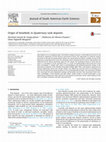
Tank deposits are an exceptional type of fossiliferous deposit and bear a remarkably fossil recor... more Tank deposits are an exceptional type of fossiliferous deposit and bear a remarkably fossil record of the Pleistocene megafauna of South America, particularly of Brazil. The taphonomy of vertebrate remains preserved in this type of environmental context was clearly driven by climate, similarly to most of the Quaternary continental fossil record. The formation of the vertebrates fossil record in tank deposits was influenced by the climate seasonality typical of arid climate. The taphonomic history of most tank deposits is a consequence of this seasonality and, as a result, the paleoecological data preserved in their fossil assemblages is reliable with respect to paleobiological and paleoenvironmental settings of the Quaternary ecosystems of the Brazilian Intertropical Region (BIR). Other tank deposits experienced an unusual taphonomic history that, besides climate, was affected by recurrent events of reworking produced by the depositional agents dominant in the surrounding alluvial plains. The conclusions obtained here concerning the main taphonomic settings and formative processes that characterize fossil vertebrate assemblages of tank deposits will help further studies aimed to recover information on the paleoecology of Quaternary fauna collected in such deposits by allowing a better understanding of their time and spatial resolutions and other potential biases.
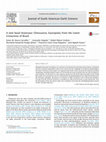
Although dinosaurian ichnofaunas are common in the Northeastern Brazilian Interior Basins, osteol... more Although dinosaurian ichnofaunas are common in the Northeastern Brazilian Interior Basins, osteological remains are poorly represented in these areas. One of the main challenges in vertebrate paleontology in the Lower Cretaceous of this region is to recognize body-fossils, which can unveil the anatomy, functional morphology and paleoecological aspects of the dinosaurian fauna recorded until now only by footprints and trackways. The discovery of a new dinosaur specimen in the Rio Piranhas Formation of the Triunfo Basin opens new perspectives into the comprehension of paleogeographical and temporal distribution of the titanosaur sauropods. Titanosaurs are common in Upper Cretaceous rocks of Brazil and Argentina. The age of the Rio Piranhas Formation is considered to range from Berriasian to early Hauterivian. Thus, the description of this new species opens new viewpoints concerning the paleobiogeographical aspects of these sauropod dinosaurs.
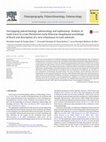
Tooth traces are key evidence in vertebrate taphonomy, paleoecology and paleoichnology. They are ... more Tooth traces are key evidence in vertebrate taphonomy, paleoecology and paleoichnology. They are product of feeding behavior of vertebrates and can also be evaluated in biostratinomic perspective. Regarding the Quaterna-ry fossil record of vertebrates in Brazil, the taphonomic-paleoecological information of tooth traces has been underexplored. Recently, features of this sort were identified in Quaternary mammals fossils recovered from Lajedo da Escada caves, state of Rio Grande do Norte, northeastern Brazil, consisting in an opportunity to unveil taphonomic, paleoichnological and paleoecological aspects of the Quaternary megafauna. The ichnospecies Machichnus bohemicus and M. fatimae are recorded in the Late Pleistocene-early Holocene age. The latter is a new ichnospecies of Machichnus described herein. The traces M. fatimae and M. bohemicus observed in Glyptotherium sp. were generated outside the cave by an adult individual of the large-sized canid Protocyon trog-lodytes during event of predation. Nonetheless, M. bohemicus recognized in Eremotherium laurillardi and Smilodon populator was generated by either a juvenile individual of P. troglodytes or an adult of the small-sized canid Cerdocyon thous, in a scavenging context, outside the cave. Probably, other tooth traces previously reported to the Quaternary of Brazil (in the states of Ceará and Minas Gerais) can be assigned to Machichnus.
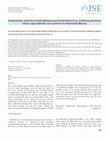
This work identifies and interprets taphonomic features of the deer fossil assemblage recovered f... more This work identifies and interprets taphonomic features of the deer fossil assemblage recovered from the Gruta do Urso cave, located in Tocantins State, Northern Brazil. Consequently, its results shed light on the origin of the vertebrate assemblages in cave deposits and paleoecological aspects of Quaternary deer of northern Brazil. The cervid fossil accumulation of the Gruta do Urso cave includes individuals of three species that died outside the cave and, then, underwent disarticulation and weathering during a time span between one and five years. During the necrolysis, they experienced scavenging by large-sized felids and small-sized canids. Then, the disarticulated remains and a mummified hindlimb were transported into the cave by multiple events of low-energy hydraulic flows. Inside the cave, some specimens experienced exposure on the water table and incrustation. The biostratinomic data suggest the taphonomic history of deers around Gruta do Urso cave occurred in arid conditions.
We report the first occurrence of anurans in the Quaternary fossil record of Rio Grande do Norte ... more We report the first occurrence of anurans in the Quaternary fossil record of Rio Grande do Norte State. The specimen UERN PV-50 was assigned to the bufonid Rhinella jimi. This finding extends the geographic distribution of this species in the northeastern Brazil during the Late Pleistocene-early Holocene. In paleoenvironmental terms, the occurrence of R. jimi in Riacho Verde paleontological site suggests an arid climate with marked seasonality in that area during the Late Pleistocene-early Holocene and that the paleobiodiversity in that region was higher than the observed in the fossil record. Furthermore, the tanks seem to have been areas of aggregating anurans during raining periods. Finally, based on sedimentological and biostratinomic data, we interpret that Riacho Verde paleontological site preserved a peripheral assemblage.
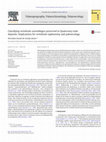
Paleoecological interpretations require detailed taphonomic analyses which can reveal how fossil ... more Paleoecological interpretations require detailed taphonomic analyses which can reveal how fossil accumulations are related to the original site of life and death of organisms. In other words, only a taphonomic approach can unveil the quality of a fossil concentration and its potential for paleoecology. A frequent issue in vertebrate taphonomy and paleoecology is the definition of autochthony, parautochthony and allochthony. These terms are widely employed to translate the spatial quality of a fossil assemblage. However, its application in terrestrial vertebrate accumulations, especially in natural tank ones, is quite confused. This work proposes a form of classification of fossil vertebrate accumulations of natural tanks in relation to their proximity to the original place of death of the biocoenoses. The terms "autochthonous", "parautochthonous" and "allochthonous", originally defined based on the analysis of marine shelly faunas are reinterpreted in attempt to clarify their application to vertebrate assemblages preserved in natural tank deposits. This classification can also be applied to other trap assemblages, such as fissures, sinkholes and caves.
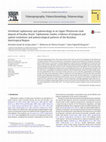
Curimatãs Paleontological Site (CPS) preserved one of the most iconic fossil assemblages of Late ... more Curimatãs Paleontological Site (CPS) preserved one of the most iconic fossil assemblages of Late Pleistocene vertebrates of Brazil. Fossils were collected in a tank deposit,a singular type of Quaternary vertebrate-bearing deposit of South America. In this work, a detailed taphonomic study of the tank assemblage of CPS is presented. This analysis also provides taphonomic and paleoecological data obtained through the application of common multivariate techniques and provides estimates of time-and spatial resolution for tank deposits. The results show that, although the CPS assemblage has experienced an array of taphonomic processes, the long-distance transport was the main process controlling the taphonomic pathway of the thanatocoenosis during the biostratinomic phase, and was responsible for the co-occurrence of other processes, such as abrasion, fragmentation and bioclastic sorting. The origin of the taphonomic modes of vertebrates in the tank deposit of CPS may have been controlled by three major taphonomic phenomena: (i) a taphonomic bias towards the large-bodied size; (ii) long time span of transportation towards the final burial environment; and (iii) some degree of reworking. Furthermore, the analysis of these taphonomic modes supports a previous hypothesis: although taphonomic biases affect the origin of tank assemblages, paleoecological patterns can be preserved with considerable fidelity. The time resolution in tank accumulations is of the order of 10 -3 to 10 4 years and their spatial resolution seems to be from local to regional.
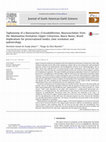
Upper Cretaceous vertebrate accumulations from the Adamantina Formation are known due to their hi... more Upper Cretaceous vertebrate accumulations from the Adamantina Formation are known due to their high
taxonomic diversity. On the other hand, taphonomic analyses still are rare, limiting the understanding of processes related to the biostratinomic and fossildiagenetic histories of this lithostratigraphic unit. In 2005, fossils were collected from an outcrop located at Jales municipality, state of São Paulo, southeastern Brazil. From this outcrop, a well-preserved Baurusuchus was recovered, which displays a peculiar
set of taphonomic signatures. This paper identifies and interprets taphonomic features of a specimen of Baurusuchus (Crocodyliformes, Baurusuchidae; UFRJ DG 418-R) from the Adamantina Formation (Upper Cretaceous of the Bauru Basin), in Jales municipality, state of São Paulo. Brief taphonomic comparisons with other specimens previously studied (crocodiles and dinosaurs) and a lithofaciological analysis of the
outcrop were undertaken in order to enhance the knowledge of the stratigraphy and paleoenvironment and improve the time resolution for the Adamantina Formation in the region of Jales. Furthermore, paleoecological data were interpreted based on the taphonomic analysis. The fossil is composed of an articulated segment of vertebral column, ribs, part of the pelvic girdle and gastralia. There is no hydraulic equivalence between both the specimen of Baurusuchus and the size of quartz grain predominant in the fossiliferous layer, suggesting death in situ or short transport as a “water carcass”. Teeth marks identified on the pubes were assigned to a small/juvenile baurusuchid crocodyliform or a theropod dinosaur. The repositioning of some elements (ribs and dorsal osteoderms) is suggestive of mummification. Desiccation marks were observed and attributed to the stage 1 of weathering. These features suggest subaerial exposure of the carcass prior to burial, however, probably after the mummification. On the other hand, the subaerial exposure was short, because the individual
was not fully disarticulated. Furthermore, the degrees of articulation and preservation of the specimen nullify the hypothesis of reworking. Lithofaciological and taphonomic analyses suggest a well-drained floodplain as the burial environment and an arid or semi-arid climate in the region of Jales outcrop. In addition, the taphonomic signatures seem to indicate a time resolution about 100e104 years for the layer where the crocodyliforms were collected, but it seems to have, within this time limit, temporal-mixing among terrestrial crocodiles and dinosaurs collected from the same layer, suggesting time-averaging in this outcrop.






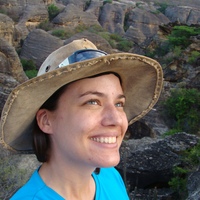
Uploads
Papers by Hermínio Araújo-Júnior
Caves of the Bambuí Speleological Province, in Aurora do Tocantins, Northern Brazil, have revealed important fossil accumulations attributed to the Upper Pleistocene–Holocene. Recently, the first fossil records were recovered from the Tacho de Ouro cave, which are assigned to Tayassu pecari, Cervidae indet., Odocoileus virginianus, Mazama sp., Palaeolama major, Tapirus sp., Coendou sp. and Catonyx cuvieri. The presence of extinct taxa suggests that this fossil assemblage maybe attributed to the late Pleistocene–Holocene interval. Information on the recognized habitats for the species found in the cave indicates an environment affected by climatic variations in this interval, corroborating with the hypothesis of non-contemporaneity of the species. The presence of O. virginianus in Tacho de Ouro cave represents the southmost occurrence of the species in Brazil. The taphonomical analysis indicates that the animals probably perished externally to the cave and then were carried into the cave by a low-energy hydraulic flow, being quickly buried in contact with the vadose level of the cave. Trace fossils observed in some specimens are associated with the predation or scavenging by carnivores (Fodinichnia)
taxonomic diversity. On the other hand, taphonomic analyses still are rare, limiting the understanding of processes related to the biostratinomic and fossildiagenetic histories of this lithostratigraphic unit. In 2005, fossils were collected from an outcrop located at Jales municipality, state of São Paulo, southeastern Brazil. From this outcrop, a well-preserved Baurusuchus was recovered, which displays a peculiar
set of taphonomic signatures. This paper identifies and interprets taphonomic features of a specimen of Baurusuchus (Crocodyliformes, Baurusuchidae; UFRJ DG 418-R) from the Adamantina Formation (Upper Cretaceous of the Bauru Basin), in Jales municipality, state of São Paulo. Brief taphonomic comparisons with other specimens previously studied (crocodiles and dinosaurs) and a lithofaciological analysis of the
outcrop were undertaken in order to enhance the knowledge of the stratigraphy and paleoenvironment and improve the time resolution for the Adamantina Formation in the region of Jales. Furthermore, paleoecological data were interpreted based on the taphonomic analysis. The fossil is composed of an articulated segment of vertebral column, ribs, part of the pelvic girdle and gastralia. There is no hydraulic equivalence between both the specimen of Baurusuchus and the size of quartz grain predominant in the fossiliferous layer, suggesting death in situ or short transport as a “water carcass”. Teeth marks identified on the pubes were assigned to a small/juvenile baurusuchid crocodyliform or a theropod dinosaur. The repositioning of some elements (ribs and dorsal osteoderms) is suggestive of mummification. Desiccation marks were observed and attributed to the stage 1 of weathering. These features suggest subaerial exposure of the carcass prior to burial, however, probably after the mummification. On the other hand, the subaerial exposure was short, because the individual
was not fully disarticulated. Furthermore, the degrees of articulation and preservation of the specimen nullify the hypothesis of reworking. Lithofaciological and taphonomic analyses suggest a well-drained floodplain as the burial environment and an arid or semi-arid climate in the region of Jales outcrop. In addition, the taphonomic signatures seem to indicate a time resolution about 100e104 years for the layer where the crocodyliforms were collected, but it seems to have, within this time limit, temporal-mixing among terrestrial crocodiles and dinosaurs collected from the same layer, suggesting time-averaging in this outcrop.
Caves of the Bambuí Speleological Province, in Aurora do Tocantins, Northern Brazil, have revealed important fossil accumulations attributed to the Upper Pleistocene–Holocene. Recently, the first fossil records were recovered from the Tacho de Ouro cave, which are assigned to Tayassu pecari, Cervidae indet., Odocoileus virginianus, Mazama sp., Palaeolama major, Tapirus sp., Coendou sp. and Catonyx cuvieri. The presence of extinct taxa suggests that this fossil assemblage maybe attributed to the late Pleistocene–Holocene interval. Information on the recognized habitats for the species found in the cave indicates an environment affected by climatic variations in this interval, corroborating with the hypothesis of non-contemporaneity of the species. The presence of O. virginianus in Tacho de Ouro cave represents the southmost occurrence of the species in Brazil. The taphonomical analysis indicates that the animals probably perished externally to the cave and then were carried into the cave by a low-energy hydraulic flow, being quickly buried in contact with the vadose level of the cave. Trace fossils observed in some specimens are associated with the predation or scavenging by carnivores (Fodinichnia)
taxonomic diversity. On the other hand, taphonomic analyses still are rare, limiting the understanding of processes related to the biostratinomic and fossildiagenetic histories of this lithostratigraphic unit. In 2005, fossils were collected from an outcrop located at Jales municipality, state of São Paulo, southeastern Brazil. From this outcrop, a well-preserved Baurusuchus was recovered, which displays a peculiar
set of taphonomic signatures. This paper identifies and interprets taphonomic features of a specimen of Baurusuchus (Crocodyliformes, Baurusuchidae; UFRJ DG 418-R) from the Adamantina Formation (Upper Cretaceous of the Bauru Basin), in Jales municipality, state of São Paulo. Brief taphonomic comparisons with other specimens previously studied (crocodiles and dinosaurs) and a lithofaciological analysis of the
outcrop were undertaken in order to enhance the knowledge of the stratigraphy and paleoenvironment and improve the time resolution for the Adamantina Formation in the region of Jales. Furthermore, paleoecological data were interpreted based on the taphonomic analysis. The fossil is composed of an articulated segment of vertebral column, ribs, part of the pelvic girdle and gastralia. There is no hydraulic equivalence between both the specimen of Baurusuchus and the size of quartz grain predominant in the fossiliferous layer, suggesting death in situ or short transport as a “water carcass”. Teeth marks identified on the pubes were assigned to a small/juvenile baurusuchid crocodyliform or a theropod dinosaur. The repositioning of some elements (ribs and dorsal osteoderms) is suggestive of mummification. Desiccation marks were observed and attributed to the stage 1 of weathering. These features suggest subaerial exposure of the carcass prior to burial, however, probably after the mummification. On the other hand, the subaerial exposure was short, because the individual
was not fully disarticulated. Furthermore, the degrees of articulation and preservation of the specimen nullify the hypothesis of reworking. Lithofaciological and taphonomic analyses suggest a well-drained floodplain as the burial environment and an arid or semi-arid climate in the region of Jales outcrop. In addition, the taphonomic signatures seem to indicate a time resolution about 100e104 years for the layer where the crocodyliforms were collected, but it seems to have, within this time limit, temporal-mixing among terrestrial crocodiles and dinosaurs collected from the same layer, suggesting time-averaging in this outcrop.
assemblage (megamammals and anurans) indicates the occurrence of spatial-mixing within a same tank deposit. The taphonomic model for tank deposits includes taphonomic features unleashed by physical processes and variations related to biogenic aspects. The integrative approach of the data gathered in this Thesis evidences that the probable taphonomic scenario for this model is a result from a paleoclimatic control on the genesis of fossiliferous deposits of tanks during the Late Pleistocene-early Holocene.